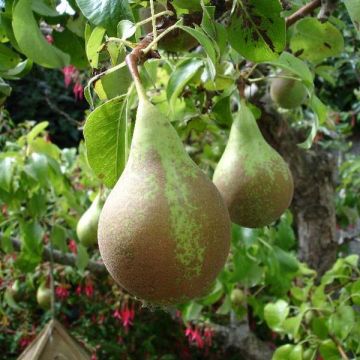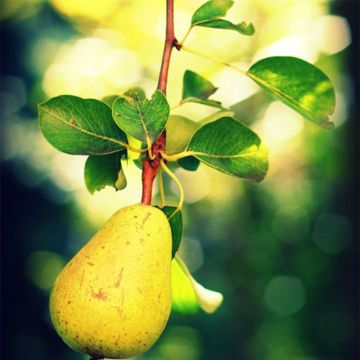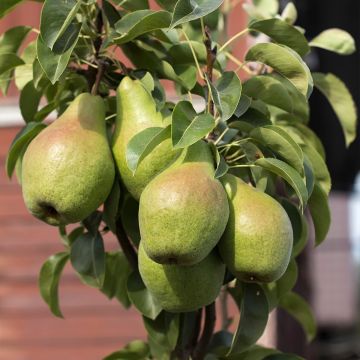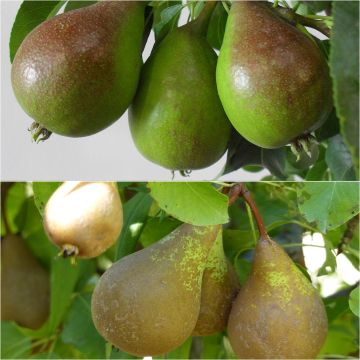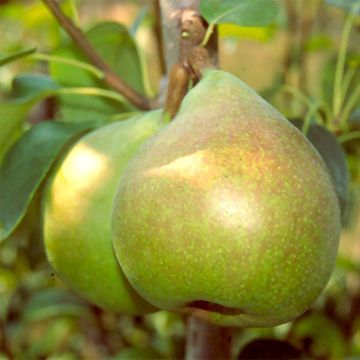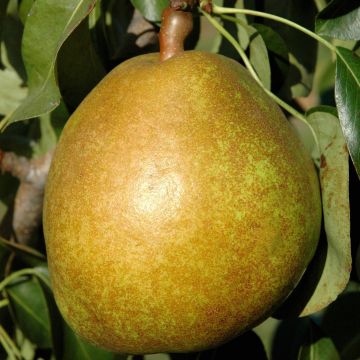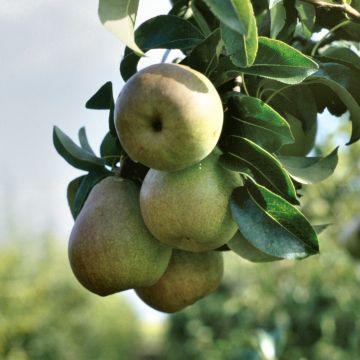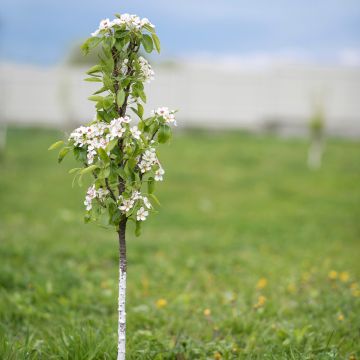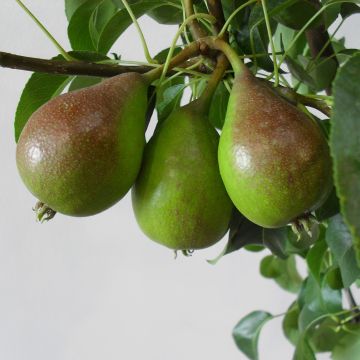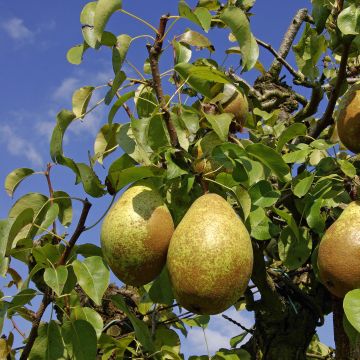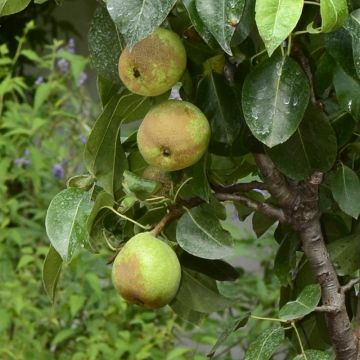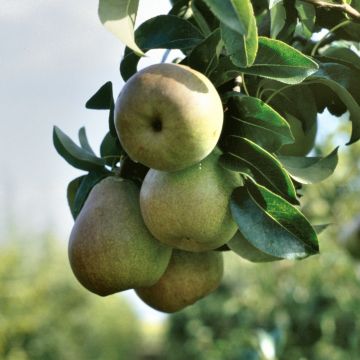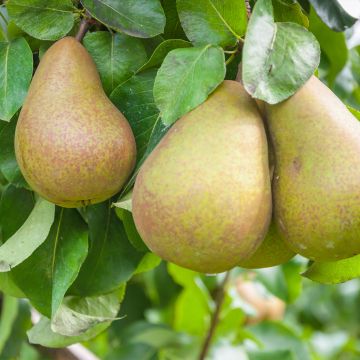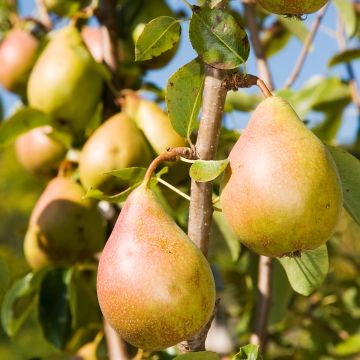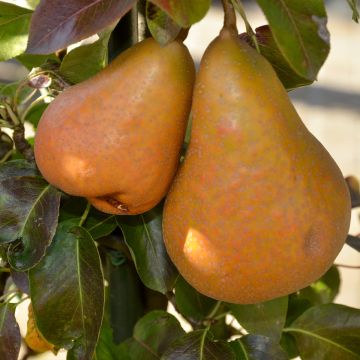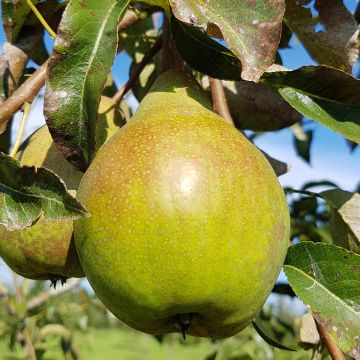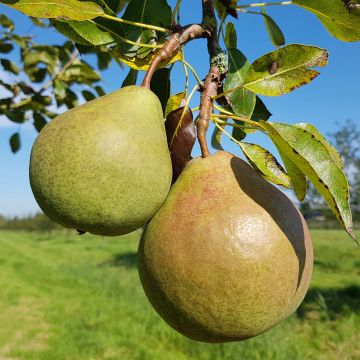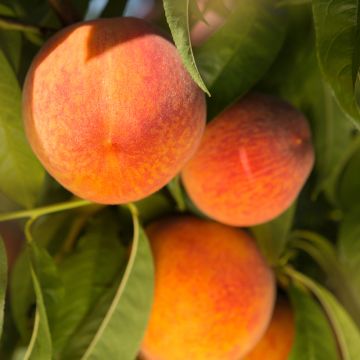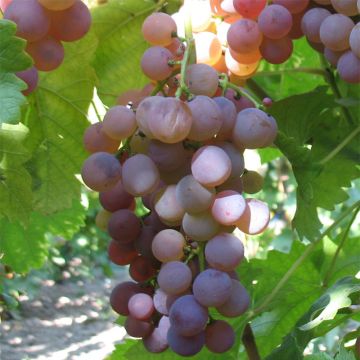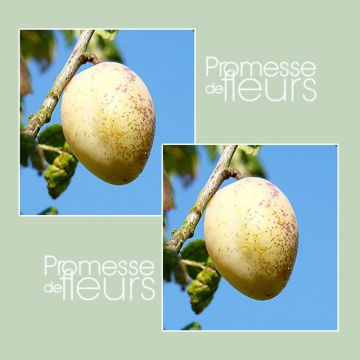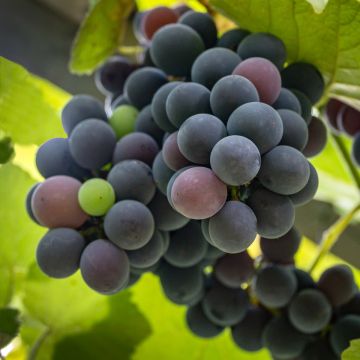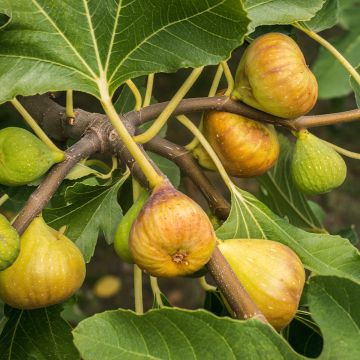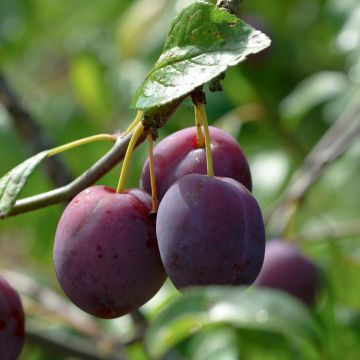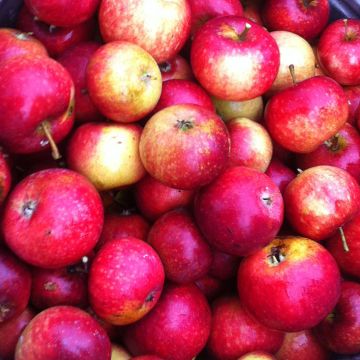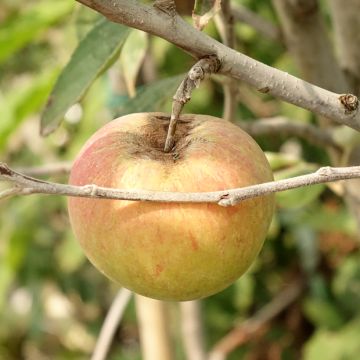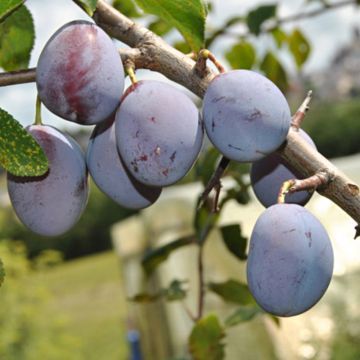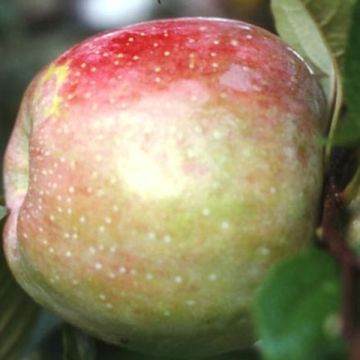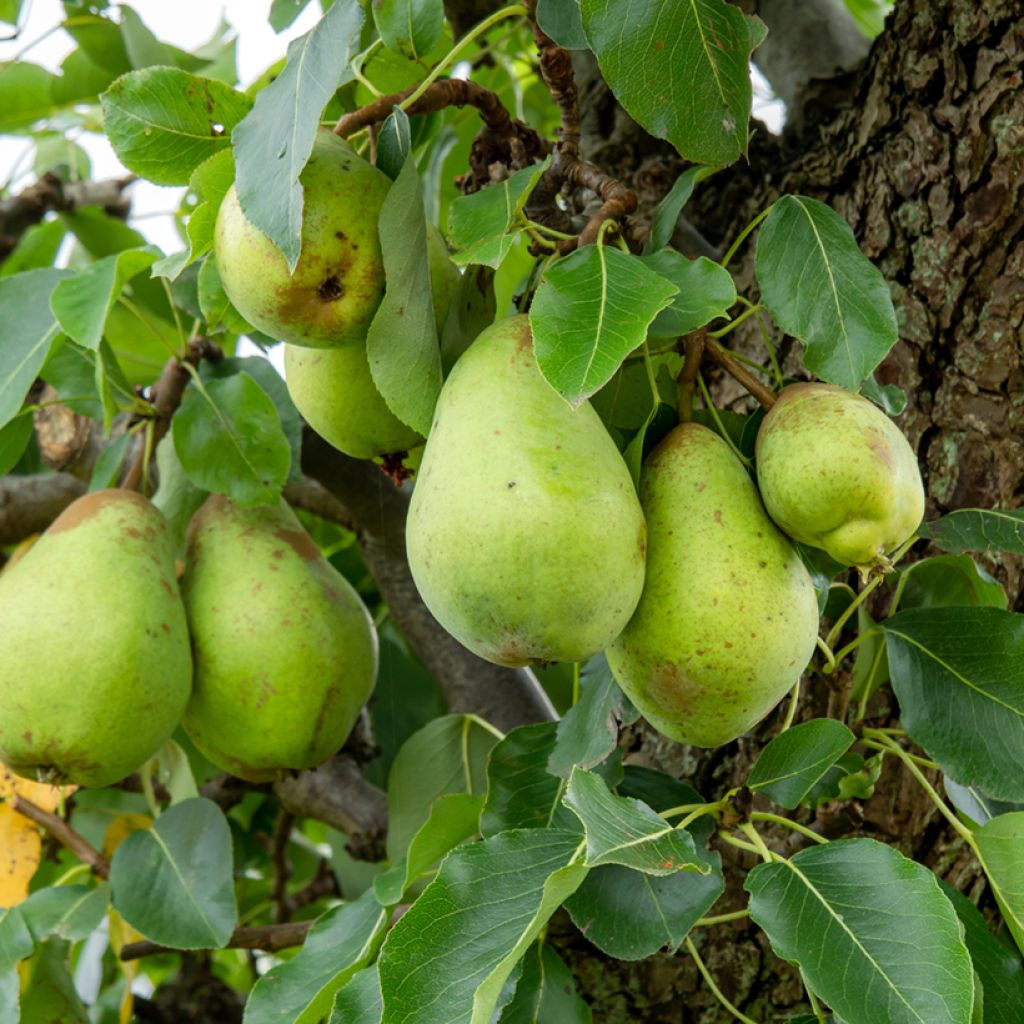

Poirier Verte Longue d’automne
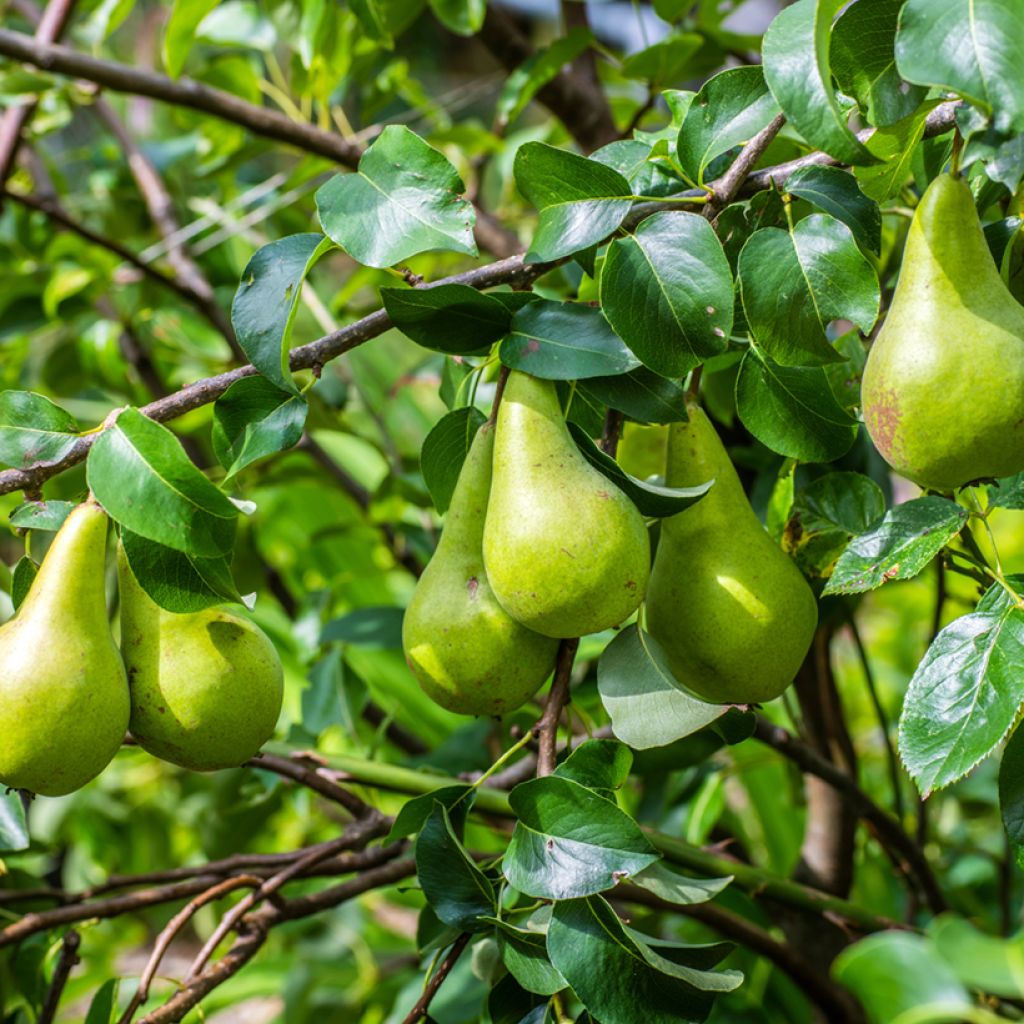

Poirier Verte Longue d’automne
Pyrus communis Long Green Autumn - Pear Tree
Pyrus communis Verte Longue d’automne
Common Pear, European Pear
Why not try an alternative variety in stock?
View all →This plant carries a 6 months recovery warranty
More information
We guarantee the quality of our plants for a full growing cycle, and will replace at our expense any plant that fails to recover under normal climatic and planting conditions.
Oversize package: home delivery by special carrier from €6.90 per order..
Express home delivery from €8.90.
Delivery to Corse prohibited: UE law prohibits the import of this plant from mainland France to Corse as part of the fight against Xylella fastidiosa. Please accept our sincere apologies.
More information
Description
The Organic Long Green Autumn Pear is an old, hardy, and vigorous variety that is known for its high yield. It produces a medium-sized fruit, with an elongated turban shape, slightly obtuse and bulging in the middle. Its skin is light green to dark green, tinged with pale yellow and dotted with large greyish spots. Its white flesh is fine, melting, juicy, sweet, slightly musky, and lightly fragrant. Harvesting takes place from late September to mid-October. The fruits can be consumed as soon as they are picked, as they ripen or can be stored until March-April. It is a delicious pear, pleasantly acidic and rich in sugar. When cooked, it lends itself well to many sweet or savoury recipes. It is a partially self-fertile variety that requires the presence of other pear varieties nearby to improve pollination and increase fruit production.
Pyrus communis (Common Pear) is a fruit tree belonging to the Rosaceae family. It has been present in Europe since ancient times and originates from forests in Western Asia. Over the centuries, a very large number of cultivars have emerged. Its cultivation is widespread in Europe.
The Long Green Autumn Pear has somewhat uncertain origins. This pear tree forms a tree with a fairly upright structure that can reach approximately 4 metres (13 feet) high and 3 metres (10 feet) wide when fully grown, producing many large, slightly arched branches. Its habit is suitable for tall forms (on a standard), low forms (bush), or espaliers (fan-trained). Its deciduous foliage consists of large ovate, 8 to 10 cm (3 to 4in) long, alternate, glossy green leaves, turning yellow-orange in autumn. Flowering occurs in April, which usually protects it from frost. The single, nectar-rich, white flowers are 2 to 3 cm (1in) in diameter and grouped in umbels. They can be destroyed by frost from -2 to -3°C. It is a hardy tree that can tolerate temperatures as low as -25°C and is suitable for cultivation in all regions, including higher altitudes. This Pear tree is self-sterile or self-incompatible, meaning the flowers cannot fertilise themselves, so other pear varieties with flowering occurring at the same time must be planted nearby. For example, the varieties Beurré Hardy, Conference, Doyenné du Comice, Jules Guyot, William’s Bon Chrétien, William's Rouge are suitable for cross-pollination, increasing the number of fruits.
The Long Green Autumn Pear is a quick-fruiting variety with a high yield and abundant and regular fruit production. Harvesting begins in early October, and the fruits can be consumed as they ripen. The pear can be eaten raw or cooked, in compotes, pastries, and desserts, in fruit salads or compositions, with cheeses or as an accompaniment to savoury dishes, alongside duck, white meats (poultry and lamb), or game. It is also perfect for making juices or preserving in syrups. Pears are fleshy and rich in water, refreshing, thirst-quenching and satisfying. They are moderately calorie-dense, rich in potassium, calcium, and magnesium, with a significant iron content. Their content of vitamins C and E, antioxidants, and fibre make pears an invigorating, energising, and rehydrating, healthy choice. The fruits can be stored for 4 to 6 months after harvesting in a cool, clean place, protected from light, at a temperature around 8 to 10°C or in a cold room, sealed from outside air, at a temperature of 1 to 3°C.
The pear tree is popular with everyone for its fruit and will fit well in the garden. Among the wide range of pear trees, it is easy to find a variety that suits you.
Plant habit
Fruit
Flowering
Foliage
Botanical data
Pyrus
communis
Verte Longue d’automne
Rosaceae
Common Pear, European Pear
Cultivar or hybrid
Other Pear trees
Planting and care
Your Organic Long Green Autumn Pear Tree will need warmth, so it should be planted sheltered from prevailing winds, especially in the north, and in full sun if possible. Pear trees thrive in moist, rich soils without stagnant moisture, but they do not tolerate soils that are too dry or too chalky. Pear trees, like all fruit trees, are best planted between October and March, outside the freezing period. Container-grown trees can be planted throughout the year, except during periods of extreme heat or frost.
To plant, dig the soil deeply and remove rocks and unwanted weeds. Add some gravel to improve drainage if necessary. Dig a wide planting hole at least 3 times the size of the root ball. Be sure to separate the subsoil from the topsoil. Mix bonemeal and organic matter (topsoil, compost, etc.) with the subsoil and pour this mixture into the bottom of the planting hole. Place the root ball, cover it with the topsoil without burying the graft collar, and firm it down. Water generously (about 10 litres). It may be beneficial to stake the pear tree by installing a guy wire system: plant 3 stakes in a triangle about 50 cm (20in) around the trunk and connect them with pieces of wood. Protect the bark with a piece of rubber, for example, and attach the stakes to the trunk with wire. It is also possible to espalier it on a support (such as a U-shaped espalier or a Verrier espalier).
Apply well-rotted compost on the surface every autumn. Then, in winter, add a small shovel of wood ash, rich in potash, to improve fruiting. Hoe if necessary at the base of the tree. Water regularly, depending on your climate, during the first two or three years.
Pear trees can be susceptible to various diseases and pests. To prevent scab (brown spots on the leaves), brown rot (wilting of flowers and rotting of fruits on the tree), and powdery mildew (white powdery coating on the leaves), spray Bordeaux mixture and horsetail infusions. As for pests, the codling moth, a small caterpillar that attacks the fruits, can be controlled by installing bird and bat boxes, placing wavy cardboard strips along the trunk, and bagging the fruits in brown paper. In case of aphid infestation, spray a mixture of water and black soap.
Planting period
Intended location
Care
This item has not been reviewed yet - be the first to leave a review about it.
Ancient and local varieties
Haven't found what you were looking for?
Hardiness is the lowest winter temperature a plant can endure without suffering serious damage or even dying. However, hardiness is affected by location (a sheltered area, such as a patio), protection (winter cover) and soil type (hardiness is improved by well-drained soil).

Photo Sharing Terms & Conditions
In order to encourage gardeners to interact and share their experiences, Promesse de fleurs offers various media enabling content to be uploaded onto its Site - in particular via the ‘Photo sharing’ module.
The User agrees to refrain from:
- Posting any content that is illegal, prejudicial, insulting, racist, inciteful to hatred, revisionist, contrary to public decency, that infringes on privacy or on the privacy rights of third parties, in particular the publicity rights of persons and goods, intellectual property rights, or the right to privacy.
- Submitting content on behalf of a third party;
- Impersonate the identity of a third party and/or publish any personal information about a third party;
In general, the User undertakes to refrain from any unethical behaviour.
All Content (in particular text, comments, files, images, photos, videos, creative works, etc.), which may be subject to property or intellectual property rights, image or other private rights, shall remain the property of the User, subject to the limited rights granted by the terms of the licence granted by Promesse de fleurs as stated below. Users are at liberty to publish or not to publish such Content on the Site, notably via the ‘Photo Sharing’ facility, and accept that this Content shall be made public and freely accessible, notably on the Internet.
Users further acknowledge, undertake to have ,and guarantee that they hold all necessary rights and permissions to publish such material on the Site, in particular with regard to the legislation in force pertaining to any privacy, property, intellectual property, image, or contractual rights, or rights of any other nature. By publishing such Content on the Site, Users acknowledge accepting full liability as publishers of the Content within the meaning of the law, and grant Promesse de fleurs, free of charge, an inclusive, worldwide licence for the said Content for the entire duration of its publication, including all reproduction, representation, up/downloading, displaying, performing, transmission, and storage rights.
Users also grant permission for their name to be linked to the Content and accept that this link may not always be made available.
By engaging in posting material, Users consent to their Content becoming automatically accessible on the Internet, in particular on other sites and/or blogs and/or web pages of the Promesse de fleurs site, including in particular social pages and the Promesse de fleurs catalogue.
Users may secure the removal of entrusted content free of charge by issuing a simple request via our contact form.

































